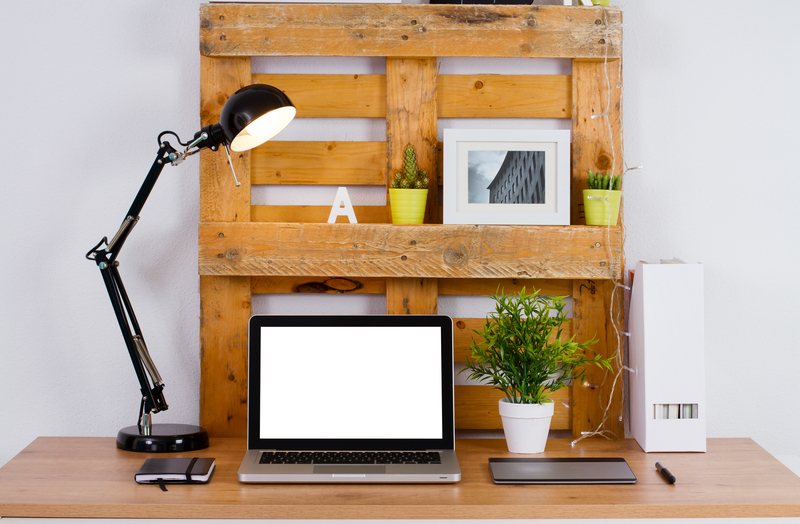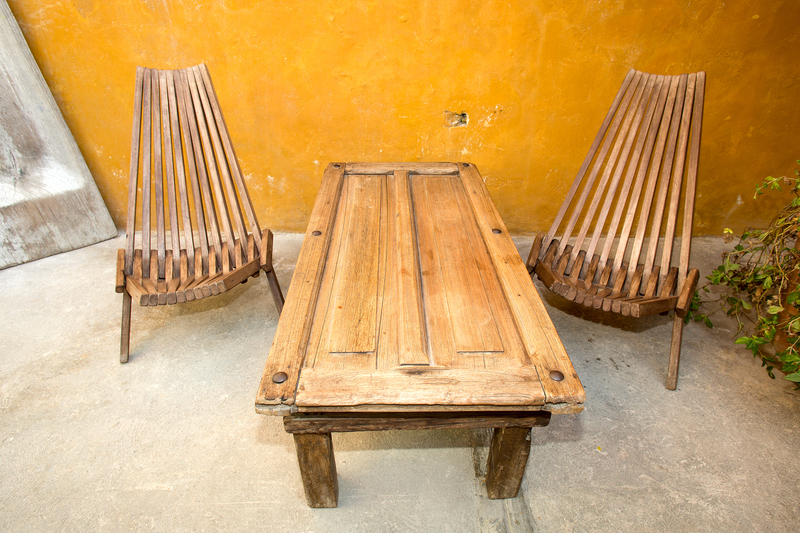Decluttering Made Simple: Steps to a Minimalist Lifestyle
In a world overflowing with possessions and distractions, embracing minimalism and clearing out the clutter can be truly transformative. Decluttering isn't just about cleaning up--it's a mindset to streamline your life, reduce stress, and foster contentment. Whether you're just starting your minimalist journey or looking to hone your clutter-free habits, this comprehensive guide delivers actionable steps for achieving a cleaner, more intentional living space.
Understanding Minimalism and Decluttering
Minimalism is more than an aesthetic trend. It's a purposeful lifestyle that encourages you to focus on what truly matters by eliminating the excess--both physical and mental. Decluttering, meanwhile, is the practical, step-by-step process of removing items that no longer serve a meaningful purpose. When combined, these approaches can lead to a more fulfilling existence, free from the overwhelm of unnecessary belongings and distractions.

Why Shift Towards a Minimalist Lifestyle?
Before diving into actionable strategies, it's important to explore why adopting minimalism and simplified living can benefit you. Decluttering isn't merely about physical tidiness--its positive impacts run far deeper:
- Reduced stress and anxiety: A cluttered environment can be mentally exhausting. Minimalism brings calm and clarity to your everyday routine.
- Enhanced focus: With fewer distractions, you can channel your energy toward the things you value most.
- Financial savings: Buying less means spending less, helping you prioritize investments that truly enrich your life.
- Time efficiency: Find what you need quickly and avoid wasting time on endless tidying or searching.
- Improved aesthetics: Minimalist homes are often more visually appealing, open, and easier to maintain.
Is Minimalism Right for You?
Minimalism is adaptable for everyone--regardless of age, family status, or home size. Whether you prefer a spare, modern look or simply want to trim the excess, decluttering can be tailored to suit your unique lifestyle and preferences.
Simple Steps to a Minimalist Lifestyle
Decluttering made simple means breaking down the process into manageable chunks and keeping your goals your top priority. Here's a detailed step-by-step guide to help you embrace minimalism with confidence and ease.
1. Set Clear Intentions and Goals
- Visualize success: Imagine how your space will feel and function after you've decluttered. Setting a vision keeps you motivated.
- Define your minimalist goals: Are you aiming for a serene home, less maintenance, or a more sustainable lifestyle?
- Identify trouble spots: Walk through your home and make note of the most cluttered areas to prioritize your efforts.
2. Schedule Time and Tackle Small Areas
Rather than overwhelm yourself with a full-house purge, commit to decluttering one space at a time. Start with a single drawer, shelf, or closet. Even dedicating just 15-20 minutes a day can help.
- Use a calendar: Block off dedicated declutter sessions in your schedule.
- Prioritize consistency: Small, regular progress beats sporadic big efforts.
3. Sort with a System
To simplify decision-making, sort your items using the classic Four-Box Method:
- Keep: Essential and truly loved items.
- Donate: Items in good condition that you no longer need.
- Sell: Valuable belongings you no longer use.
- Discard: Broken, outdated, or unused objects best recycled or trashed.
4. Be Ruthless but Kind
Sentimental attachments can make letting go difficult. While it's okay to keep treasured mementos, ask yourself the following:
- Have I used or worn this in the last year?
- Does it add value to my life or space?
- Would I replace it if lost?
Be kind to yourself--letting go of clutter is a process, and it's normal to feel conflicted about certain items. Focus on the benefits of a tidier, more intentional home.
5. Maximize Space and Efficiency
Once you've eliminated unnecessary items, organize what's left for maximum functionality:
- Store similar items together to streamline access.
- Utilize vertical space with shelves and storage units.
- Label boxes and bins for easy identification.
- Limit duplicates--keep only what you regularly use.
6. Simplify Daily Routines
Minimalism extends into daily life through simplified routines and habits:
- Plan your wardrobe: Adopt a capsule wardrobe with versatile, quality pieces.
- Automate chores: Create a quick cleaning routine to prevent clutter buildup.
- Digital declutter: Unsubscribe from unnecessary emails and clear your desktop.
7. Implement Regular Maintenance
The journey to a minimalist lifestyle is ongoing, not a one-time event. Set aside time each week or month for mini-decluttering sessions to stay on track.
- Review new items: If something new comes in, let something else go.
- Seasonal purges: Revisit closets, storage, and papers every few months.
Decluttering Made Simple: Practical Tips for Success
Stay Motivated
- Document progress with before-and-after photos.
- Celebrate milestones--each decluttered area is an achievement.
- Enlist support from friends or family with similar minimalist goals.
Overcome Decluttering Challenges
Feeling stuck? You're not alone. Recognize common roadblocks such as guilt, overwhelm, or perfectionism. Tackle them by:
- Breaking large tasks into micro-goals.
- Practicing gratitude for what you keep and release.
- Reminding yourself of your why: a simpler, happier home.
Embrace Mindful Consumption
Decluttering is only half the equation--limiting new acquisitions is essential for lasting minimalism. Before purchasing, ask yourself:
- Do I truly need this, or is it a fleeting want?
- Will it enhance my life or merely add clutter?
- Can I borrow or repurpose something instead?
Room-By-Room Minimalist Decluttering Strategy
Decluttering made simple means focusing on one room at a time. Here are targeted tips for different spaces:
Kitchen
- Purge rarely used appliances, duplicate utensils, and expired foods.
- Keep only your favorite dishes and cookware.
- Clear countertops for a cleaner, more functional workspace.
Living Room
- Edit decor and furniture to the essentials for an open, relaxing atmosphere.
- Sort through books, magazines, and electronics, keeping what you use or love.
- Use baskets or bins to corral remotes and loose items.
Bedroom
- Maintain a clutter-free nightstand with only essentials.
- Downsize your wardrobe, donating clothing you rarely wear.
- Store off-season apparel elsewhere to free up space.
Bathroom
- Toss expired medications, unused beauty products, and half-empty bottles.
- Keep daily toiletries within easy reach and store extras out of sight.
- Employ drawer dividers or baskets for organized storage.
Home Office
- Digitize paperwork and shred unnecessary files.
- Edit office supplies to what's regularly in use.
- Clear your desk at the end of each workday.
The Emotional Side of Decluttering
For many, the act of releasing possessions brings up old memories and feelings. When confronting sentimental items:
- Preserve, don't accumulate: Keep one or two special mementos, and photograph the rest as keepsakes.
- Honor the memory, not the thing: Understand that the value lies in the memories, not the physical object.
- Share the joy: Consider gifting items with sentimental value to family or friends who will appreciate them.
Minimalism Beyond the Home
Decluttering your environment sets the stage for bigger life changes. As your living space transforms, you may find yourself wanting to simplify other areas:
- Digital life: Unsubscribe from emails, organize files, and limit screen time.
- Calendar and commitments: Say no to unnecessary obligations and protect your time.
- Relationships: Invest energy in meaningful connections and let go of toxic dynamics.

FAQs About Decluttering Made Simple
How do I start decluttering when overwhelmed by clutter?
Begin with one small, manageable space. Your first step could be a single drawer or shelf. Celebrate each success, and remember, consistency matters more than speed.
What if I regret getting rid of something?
Be intentional with your sorting process. If you're unsure, place items in a "maybe" box for 30 days. If you don't miss them, you'll likely feel more confident letting them go.
How can families live a minimalist lifestyle together?
Communication and collaboration are key. Involve everyone in setting goals and respecting each person's needs and boundaries. Model the behavior and focus on shared benefits: less stress, more quality time, and a tidy home for all.
Conclusion: Minimalism as a Lifelong Practice
Decluttering made simple is a journey that leads to much more than a clean house. It's a shift in mindset toward valuing quality over quantity, mindful choices over mindless accumulation, and clarity over chaos. By following these structured steps and customizing your approach, you'll discover a minimalist lifestyle that enhances not just your space, but every aspect of your life.
Begin today--one step, one drawer, one decision at a time. Your path to a tranquil, purposeful life is waiting.
```